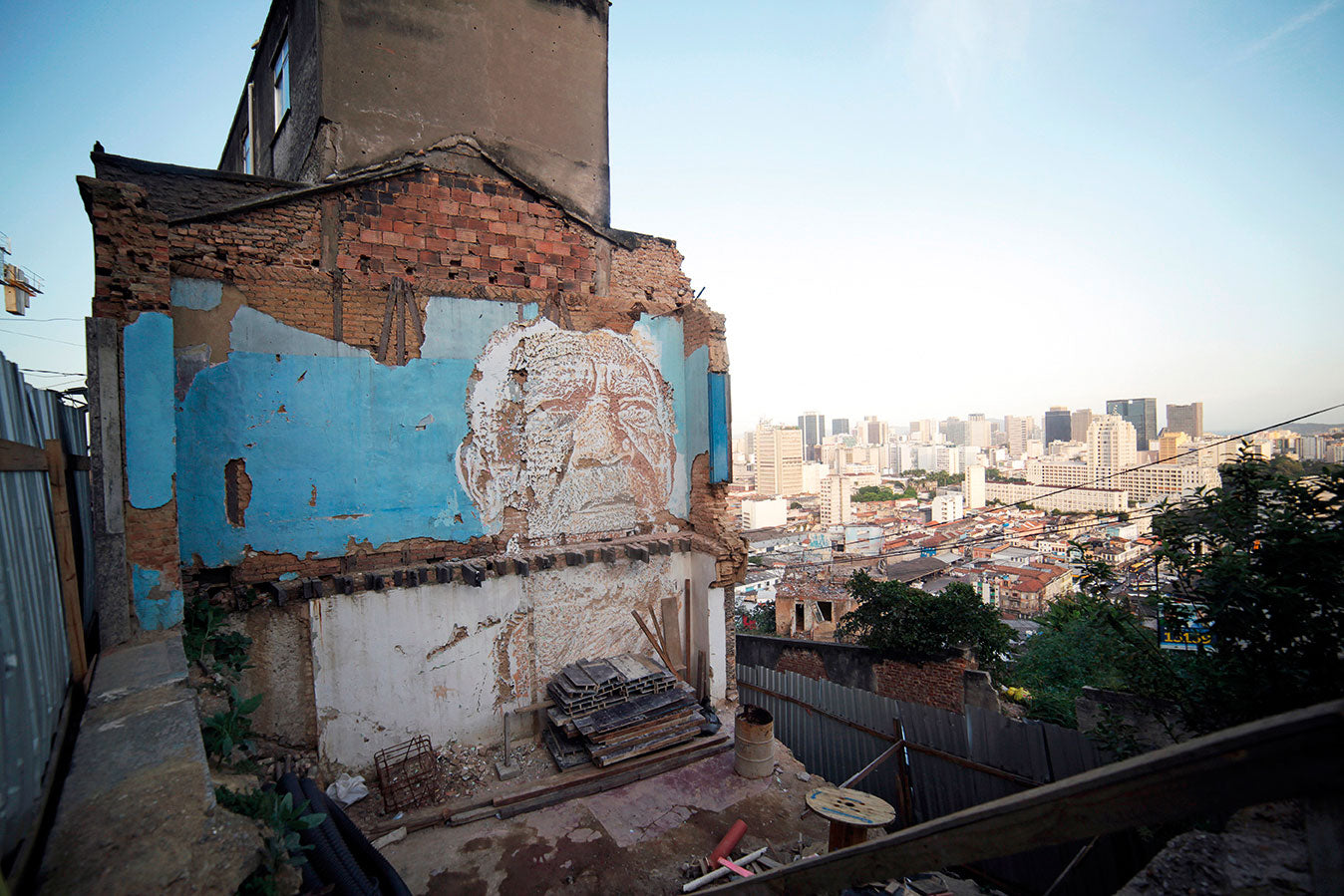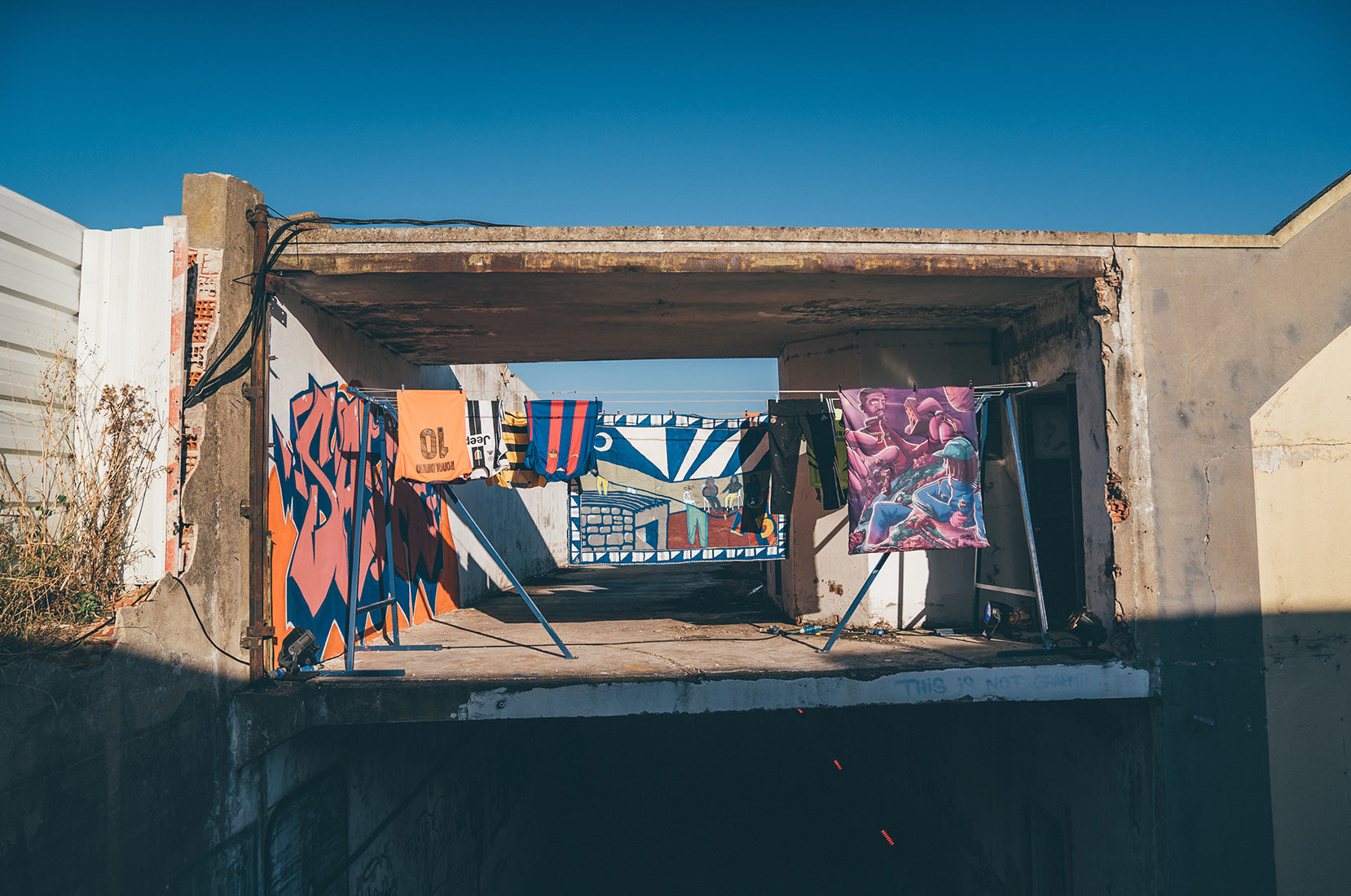Distante
33 minutes. That's how long the train ride between Rossio, in Lisbon, and the station of Algueirão-Mem Martins, in Linha de Sintra, lasts.
For the artists of the Unidigrazz collective, this itinerary is a part of their everyday life since childhood: despite apparently short, the distance between the two stations is, symbolically, gigantic. Even greater are the stories you can tell about this route. Those same 33 minutes are all it takes to lead to contrasting narratives destined to entirely uneven scenarios.
What is called "periphery" and "center" is in the eye of the beholder. Those who are geographically located at the margins are the ones challenged by segregation. The distance lies in the right to occupy the city, it is in the stereotyped construction of the "other". In their first solo exhibition, Distante, Unidigrazz confirms, highlights and questions inequality. From access to mobility, culture, education, housing, and documentation, to police violence and racism. They talk about the abyss between different realities from a citizens' point of view, literally casted aside, silenced and oppressed for generations. And also, from an artists' point of view who, together, represent a collective that aims to make the visibility and positivity of the artistic production made in Linha de Sintra stronger, in contrast to the often gray imaginary one can forge about this place.
A common construction in the region, the marquise occupies the center of the exhibition as a literal place of speech. It represents the experience of the house in the periphery, intimacy, and family life, but also the intermediate zone between the domestic environment and the street. It is the typical space where clothes are hanged out, goods are stored, people study, but also the possible architectonical solution to try and expand the tight space in houses. In this exhibition, the Marquizz installation presents several paintings that, like windows, make possible to take a look at the everyday life of individuals who travel in Linha de Sintra. From Unidigrazz's perspective, they now inhabit the white cube - if not physically, at least as references for the pieces.
Here, the industrial tiles that often decorate many of these marquises are recreated by hand, deconstructing the notion of pattern and equivalence connected to the traditional ceramic pieces. Painted by several hands, the tiles highlight the authenticity, diversity and asymmetry of their own creators, and also of those who inspire them. With paintings on paper, fabric and canvas, as well as multidisciplinary manifestations, artists Diogo "Gazella" Carvalho, Onun Trigueiros, Tristany, Sepher AWK and Rappepa Bedju Tempu have been combining, since 2018, their artistic practices on their way to occupy places ever more distant from their own reality. They disseminate not just one but several versions of how that reality is like.
In the words of the artists:"Unidigrazz is a consequence, a continuation of something [that already exists]; of the work of street rappers, writers, poets, of mothers everywhere. The art made by the collective reports an era that you have lived or that you are living, by means of seeing and creating of those who experience that reality. It's more than the artistic world. It's what they see and experience."
- Julia Flamingo
33 minutes. That's how long the train ride between Rossio, in Lisbon, and the station of Algueirão-Mem Martins, in Linha de Sintra, lasts.
For the artists of the Unidigrazz collective, this itinerary is a part of their everyday life since childhood: despite apparently short, the distance between the two stations is, symbolically, gigantic. Even greater are the stories you can tell about this route. Those same 33 minutes are all it takes to lead to contrasting narratives destined to entirely uneven scenarios.
What is called "periphery" and "center" is in the eye of the beholder. Those who are geographically located at the margins are the ones challenged by segregation. The distance lies in the right to occupy the city, it is in the stereotyped construction of the "other". In their first solo exhibition, Distante, Unidigrazz confirms, highlights and questions inequality. From access to mobility, culture, education, housing, and documentation, to police violence and racism. They talk about the abyss between different realities from a citizens' point of view, literally casted aside, silenced and oppressed for generations. And also, from an artists' point of view who, together, represent a collective that aims to make the visibility and positivity of the artistic production made in Linha de Sintra stronger, in contrast to the often gray imaginary one can forge about this place.
A common construction in the region, the marquise occupies the center of the exhibition as a literal place of speech. It represents the experience of the house in the periphery, intimacy, and family life, but also the intermediate zone between the domestic environment and the street. It is the typical space where clothes are hanged out, goods are stored, people study, but also the possible architectonical solution to try and expand the tight space in houses. In this exhibition, the Marquizz installation presents several paintings that, like windows, make possible to take a look at the everyday life of individuals who travel in Linha de Sintra. From Unidigrazz's perspective, they now inhabit the white cube - if not physically, at least as references for the pieces.
Here, the industrial tiles that often decorate many of these marquises are recreated by hand, deconstructing the notion of pattern and equivalence connected to the traditional ceramic pieces. Painted by several hands, the tiles highlight the authenticity, diversity and asymmetry of their own creators, and also of those who inspire them. With paintings on paper, fabric and canvas, as well as multidisciplinary manifestations, artists Diogo "Gazella" Carvalho, Onun Trigueiros, Tristany, Sepher AWK and Rappepa Bedju Tempu have been combining, since 2018, their artistic practices on their way to occupy places ever more distant from their own reality. They disseminate not just one but several versions of how that reality is like.
In the words of the artists:"Unidigrazz is a consequence, a continuation of something [that already exists]; of the work of street rappers, writers, poets, of mothers everywhere. The art made by the collective reports an era that you have lived or that you are living, by means of seeing and creating of those who experience that reality. It's more than the artistic world. It's what they see and experience."
- Julia Flamingo























